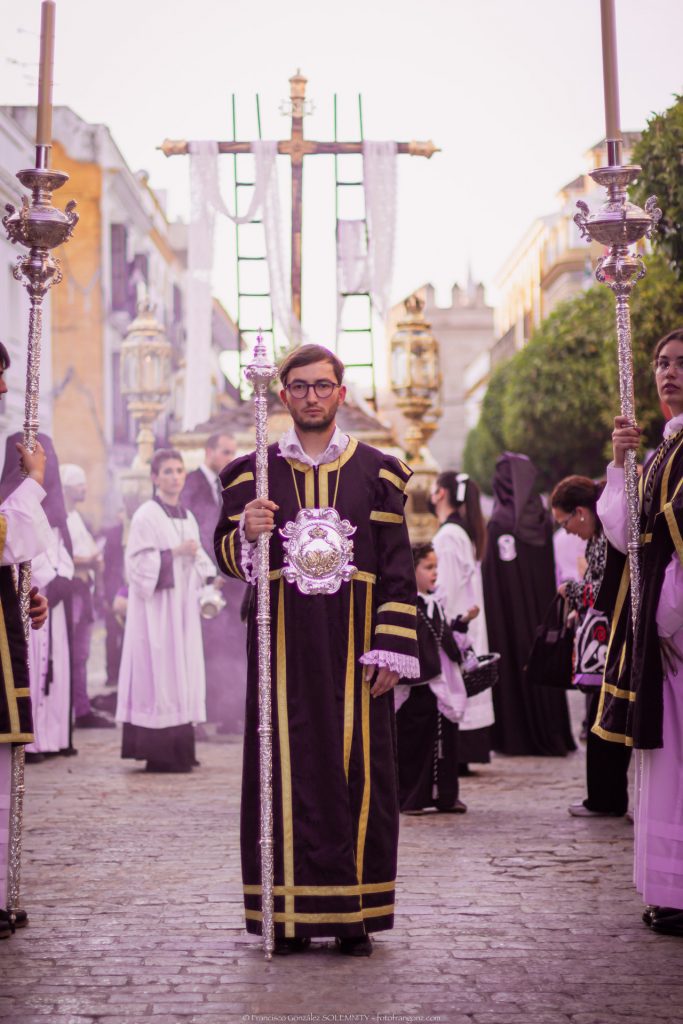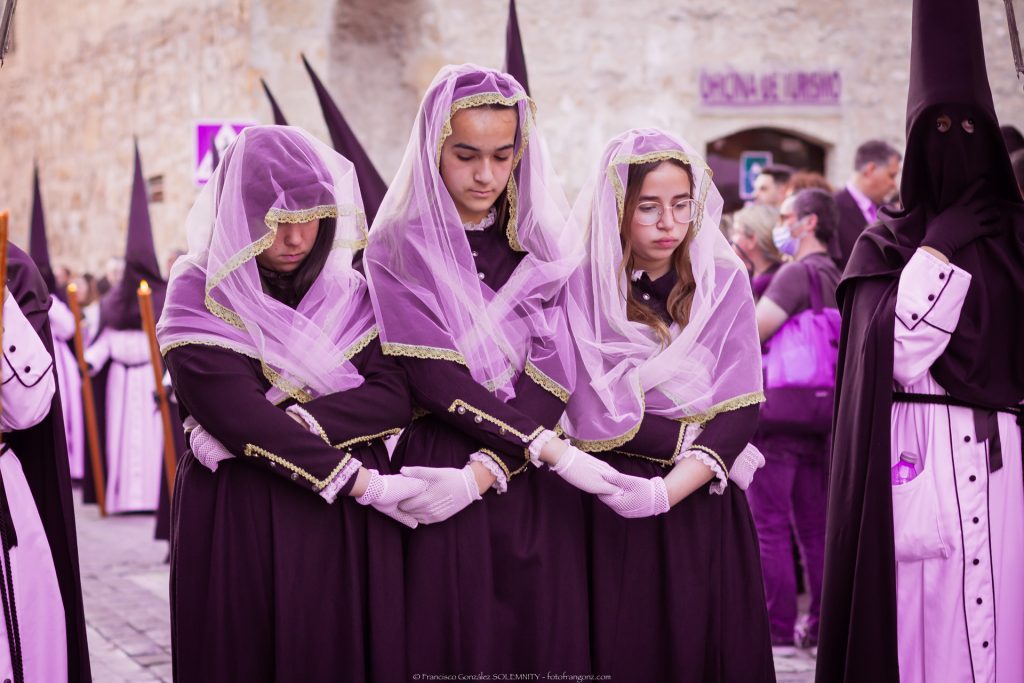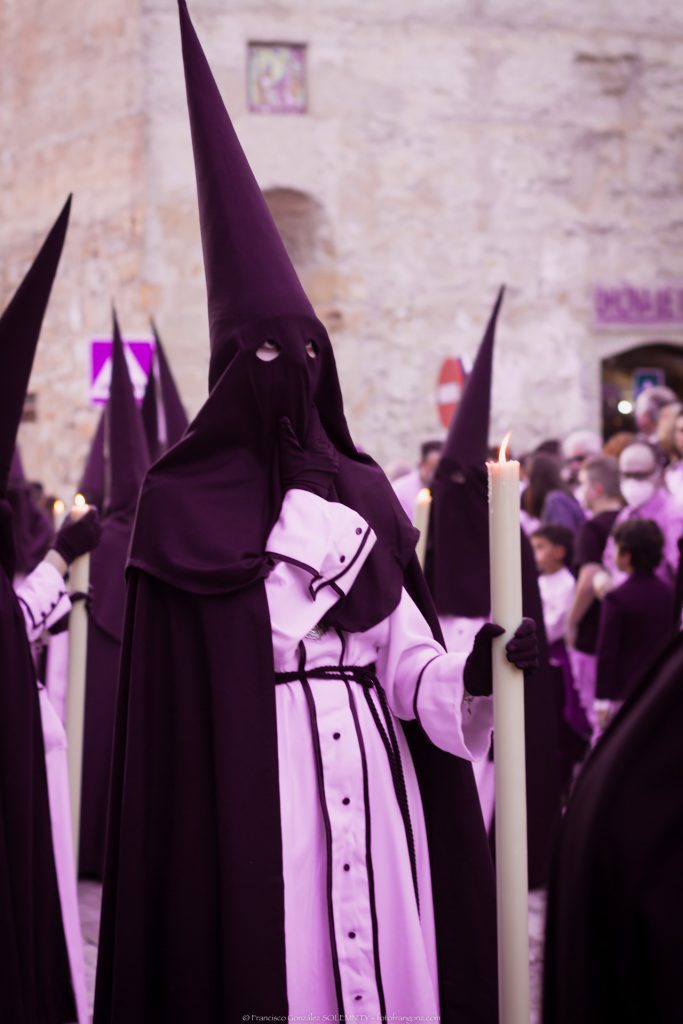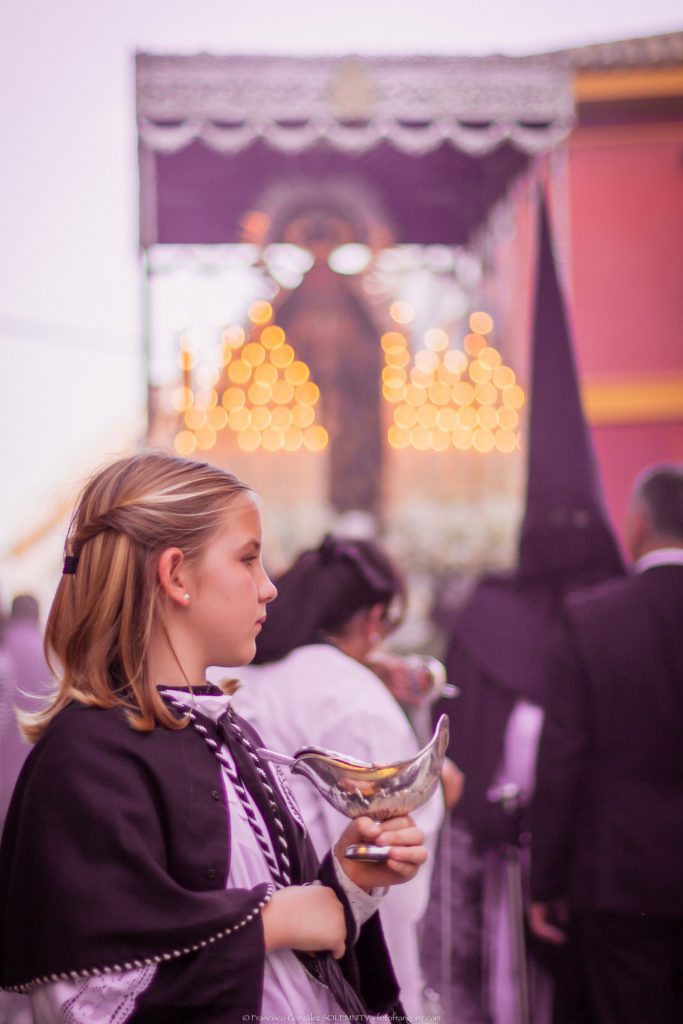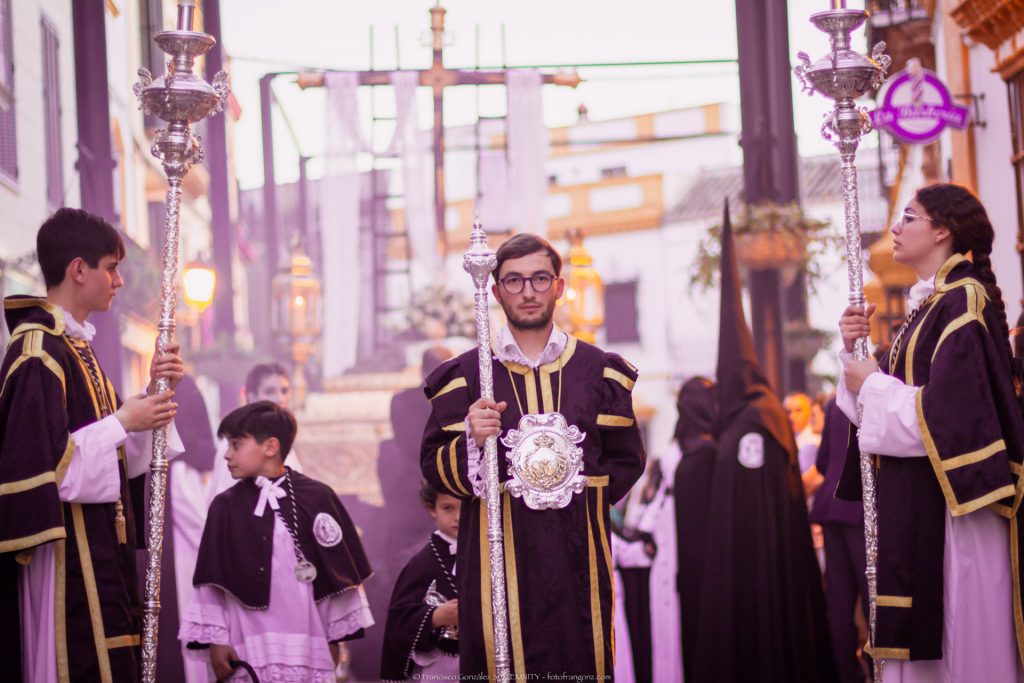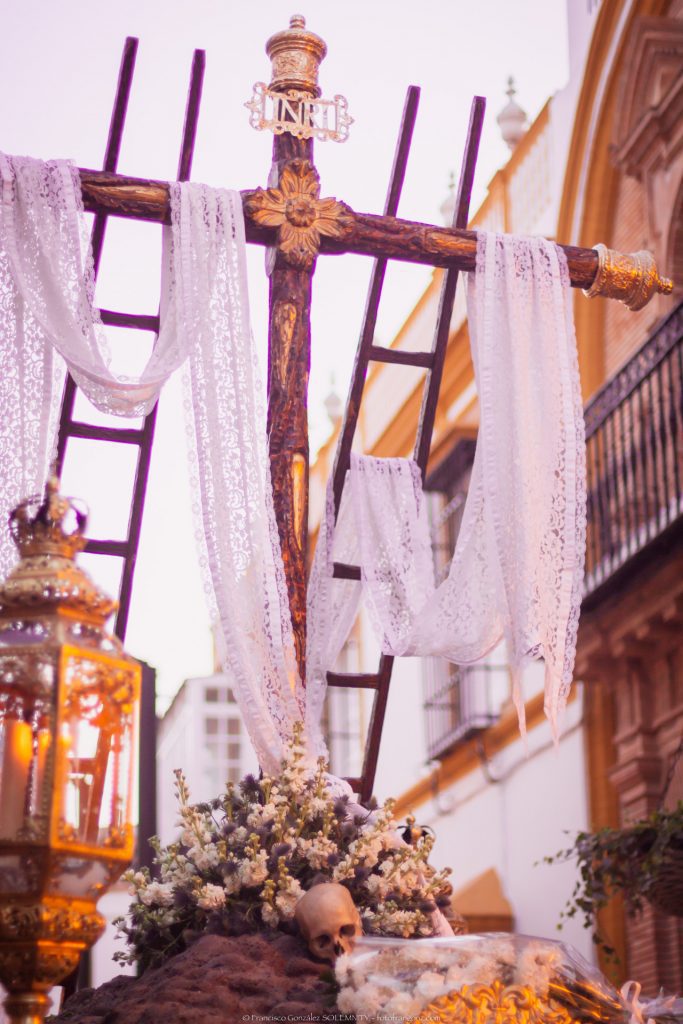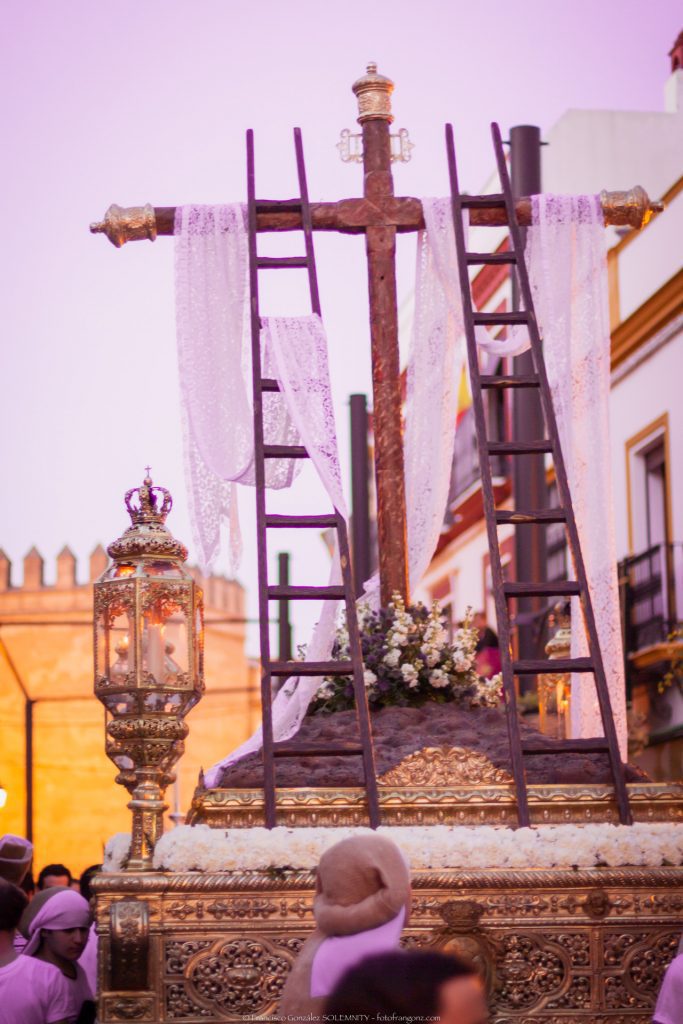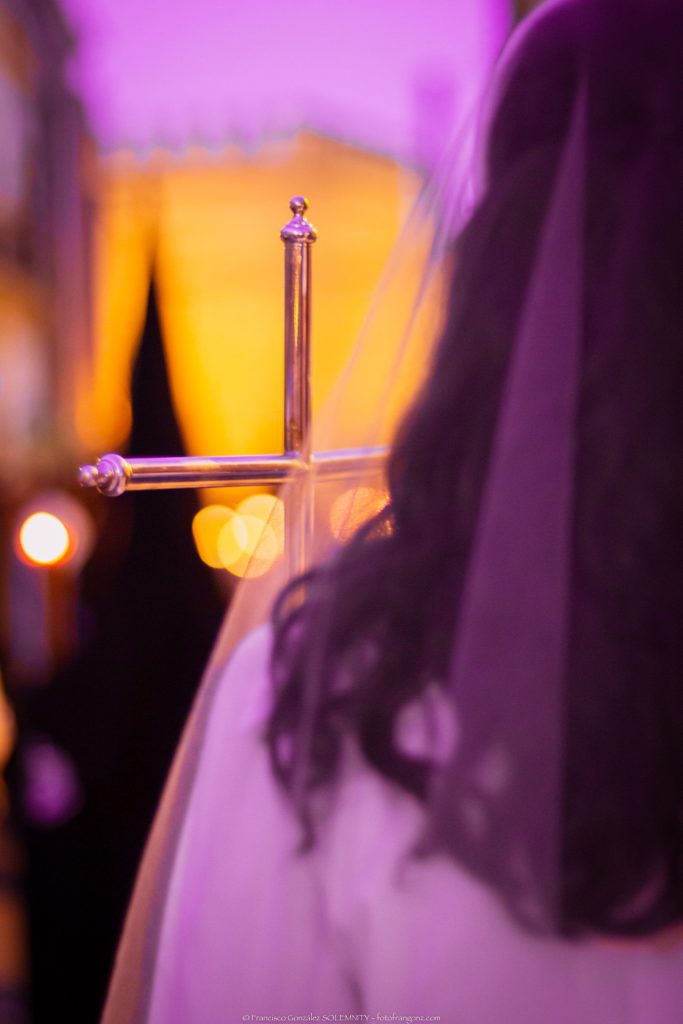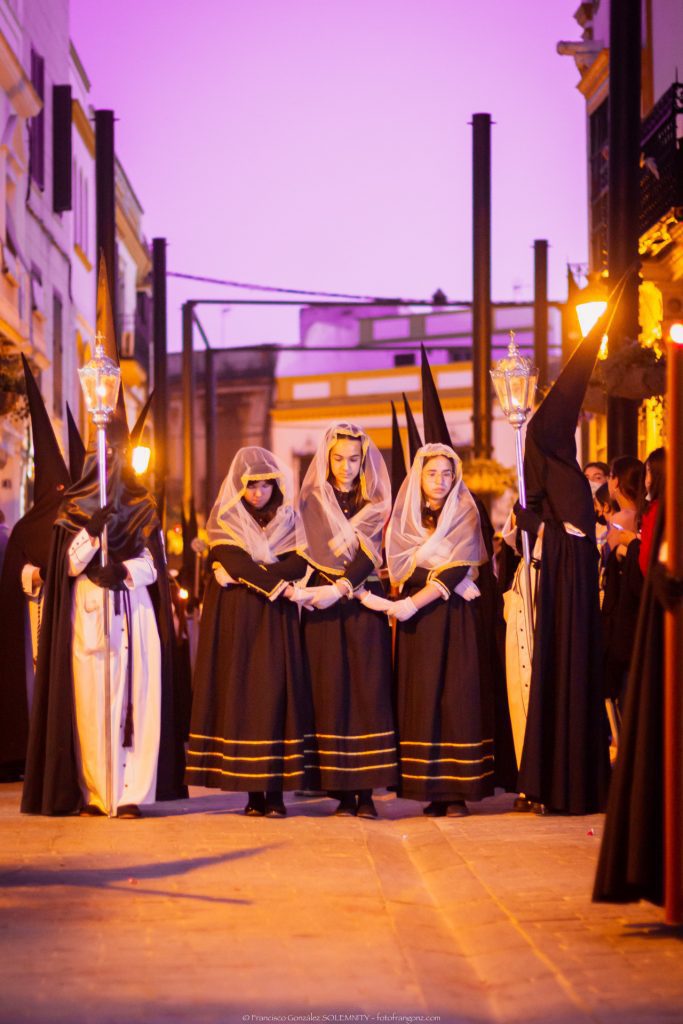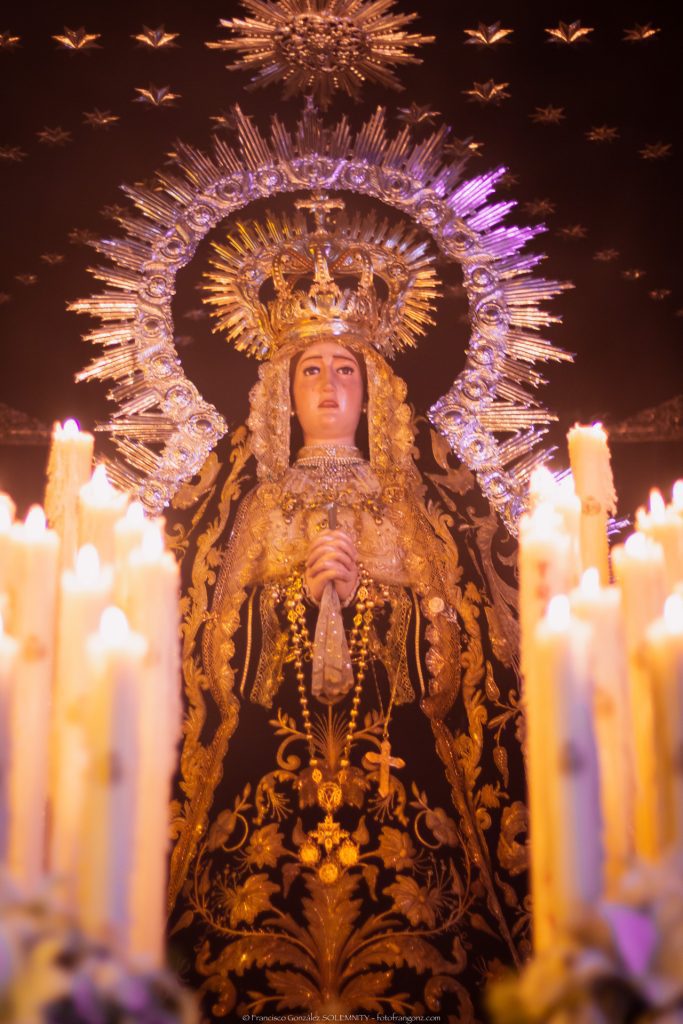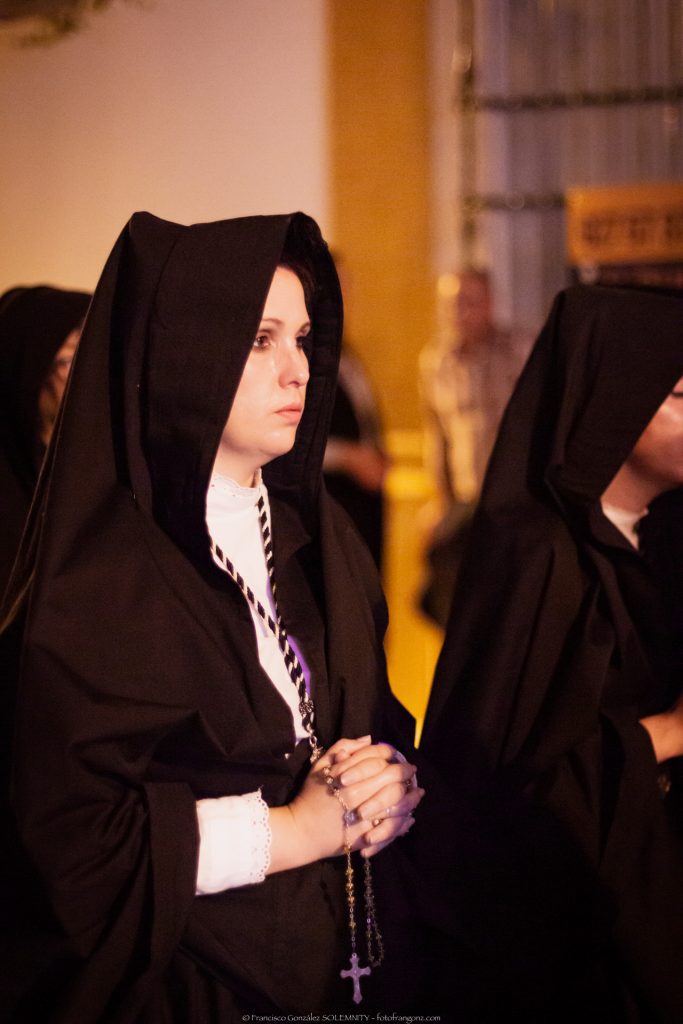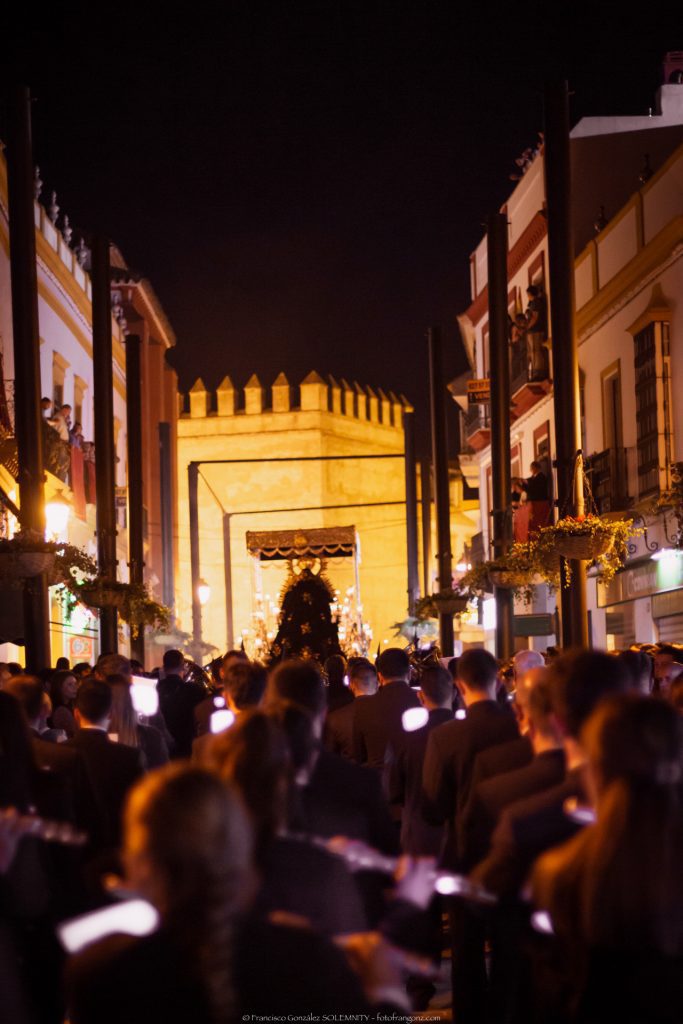The afternoon of Holy Saturday arrives and through the doors of the church of Santa María de la Mota we see the Cross of Guide appear, thus indicating the beginning of the procession of the brotherhood of the Holy Burial of Christ, Our Lady and Mother of Solitude and the Triumph of the Holy Cross, the most emblematic of the seven brotherhoods that parade through the streets of Marchena and one of the oldest, as it was founded in 1567.
Located in the old Islamic fortress of the city, which was later converted into the ducal palace, the church was originally built as the chapel of the same palace, belonging to the Dukes of Arcos, lords of the city.
The procession is opened by the passage of the Triumph of the Holy Cross, colloquially nicknamed the “escalerilla” (ladder), already without Christ, carries his Holy Shroud, as a sign of the triumph of life over death.
The Paso del Santísimo Cristo Yacente, or Santo Entierro (Holy Burial), is a golden urn with glass walls in which a lifeless Christ lies inside. An outstanding symbol is the kestrel perched on top of the coffin, which gives this brotherhood its nickname “cernicalera”. It is guarded by a Roman guard.
This brotherhood is famous for its symbolic representations. To be highlighted, it has representatives of each of the other brotherhoods of the town, and of the ecclesiastical, political, judicial and military powers. Among them the different councilors of the city council and mayor. The Three Marys, Veronica with the Shroud of Turin, the crown of thorns, the women in cloaks and skirts accompanying the Virgin, and the allegorical figure of Blind Faith, represented by a blindfolded girl, are worth mentioning.
Our Lady and Mother of Solitude, the “queen” “cernicalera”, one of the most beloved of Holy Week in Marchena, closes the procession very late at dawn, with the famous “moleeras“, saetas sung as it passes through the Santa Maria’s passage, slowing down her step.
